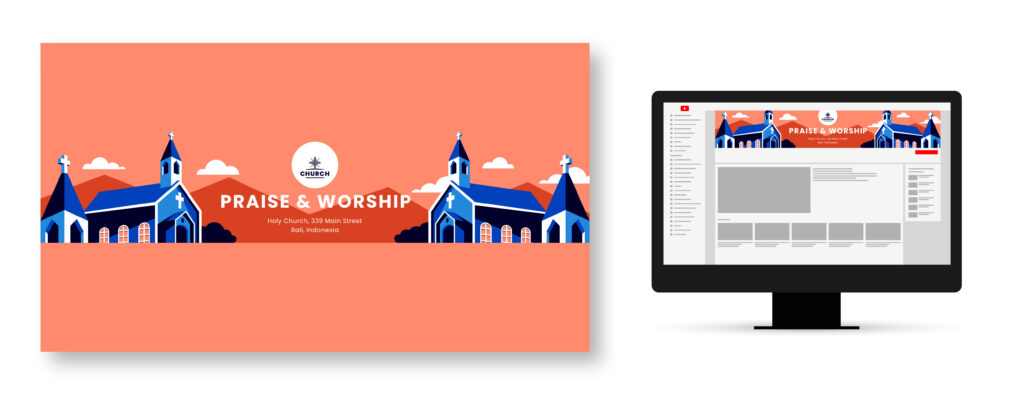
Many businesses and organizations are now using live streaming regularly. By using this technology, companies can eliminate the risk that their members will miss crucial meetings, updates, or news.
Church groups are among many other organizations that have taken advantage of this powerful technology.
The modern church is increasingly turning to technology to reach a wider audience. One of the most effective tools religious organizations use is live streaming services, especially for 24-hour streams of church services. This trend reflects a significant change in how religious content is consumed. It offers a blend of traditional and modern elements that appeal to a diverse audience, particularly younger generations.
According to data from the Pew Research Center, about a quarter of U.S. adults regularly watch religious services online; 21% use apps or websites to help read scripture.
Continuous, or 24-hour, streaming has become a popular trend among churches seeking to engage with their congregations beyond the physical confines of the church building. This approach enables constant access to spiritual content, allowing believers to connect with their faith anytime. Churches utilize this technology to stream live services, prayer sessions, and even previously recorded sermons, creating a virtual sanctuary accessible anywhere.
Benefits of 24/7 Church Streams
24/7 church streaming offers several benefits for churches and their communities:
Increased Accessibility: Continuous streaming allows individuals who cannot attend physical services because of distance, health issues, or other restrictions to participate in worship and access spiritual content whenever they want.
Flexibility: Thanks to 24/7 streaming, congregation members can engage in their faith at a time that suits them, whether they have a busy lifestyle or irregular working hours.
Broader Reach: Churches can increase their audience beyond their local community, engaging a global audience and potentially attracting new members.
Engagement with Younger Generations: Digital-native generations, such as Millennials and Generation Z, are more likely to engage with religious content online. This is because continuous streaming provides a more modern platform that resonates with their preferences.
Archiving and on-demand access: Recorded streams can be archived and made available for on-demand viewing, allowing congregation members to revisit sermons or services they missed or found particularly meaningful.
Community Building: Online chat features and social media integration can help foster a sense of belonging among viewers, enabling real-time communication and support.
Launching a 24/7 Stream
Churches must consider several key factors to launch a 24/7 streaming service. First, reliable streaming equipment and a stable internet connection are essential to ensure a smooth and continuous broadcast. Also, picking the right platform for your stream, a solid Dacast alternative, is important for delivering high-quality streaming and a seamless viewer experience. Creating a consistent content schedule that includes live and recorded content helps maintain viewer interest and variety. Churches should also promote their services on social media and other digital platforms to reach a wider audience.
THE CHURCH LIVE STREAM SETUP
In general, a church stream requires the same equipment as a regular one: a high-quality streaming camera for church, a microphone, lighting, a computer, a Router providing a stable Internet connection, and accessories that will help you capture them all (tripod, video switcher, video encoder)
Ultimately, you can add something based on your church streaming requirements.
PLATFORMS FOR LIVE-STREAMING CHURCH SERVICES
There is a wide variety of streaming platforms, but the most popular is that it attracts millions of people.
Facebook has billions of users worldwide. This free solution allows every registered user to stream and schedule streams from their mobile device or computer. However, it would be best if you considered that, as for Facebook requirements, your live stream should be 8 hours at maximum.
YOUTUBE
It is also a free solution that provides access to streams to both registered and unregistered viewers. You must set up your personal YouTube account to start your live stream of church service on YouTube.
To attract as many viewers as possible, you can try the Gyre tool, a server for 24/7 live streaming that offers the necessary infrastructure and support for continuous broadcasting. If you want to use pre-recorded video content to transform it into a live stream 24/7, this tool can also run up to eight streams simultaneously on one channel (for YouTube) or several platforms at once.
More importantly, live streaming can help the church increase revenue by allowing geographically distant viewers to make financial contributions through online donations, pay-per-view, and subscriptions.
Starting an online streaming service is more straightforward and cost-effective than TV broadcasting, which can be costly and complicated.
Given the growing popularity of smartphones, declining email open rates, and a general overabundance of communication channels, your church may want to explore several strategies for attracting people’s attention.
You can create a church app to stay connected with your church members.
Churches can utilize their mobile apps to provide educational content, such as Bible study sessions, religious classes, and workshops, further enhancing the spiritual lives of their members.
An app will help you communicate about events, notify your members, and easily upload and share your sermons as videos or integrate your existing YouTube channel into your app.
A mobile app builder makes it easy for churches to create an app that keeps their members engaged and connected. Appsgeyser Church App Builder allows you to upload videos and establish connections with Facebook and YouTube. Church’s live stream services enable app users to participate in worship from anywhere.
One of the most effective ways to engage with your app’s users is through push notifications. When they are on their device’s lock screen, users can see notifications about upcoming events, community messages, or a reminder that a live stream is about to start.
Conclusion
With the help of digital technology, churches have expanded their reach and connected with younger audiences. This flexible and convenient approach allows individuals to experience their faith in a convenient and engaging manner. As this trend gains momentum, it becomes clear that combining traditional practices and technological advances will shape the future of religious engagement.
